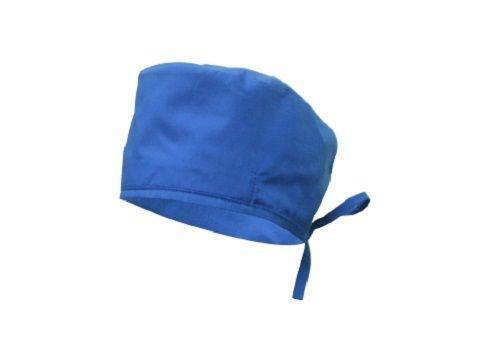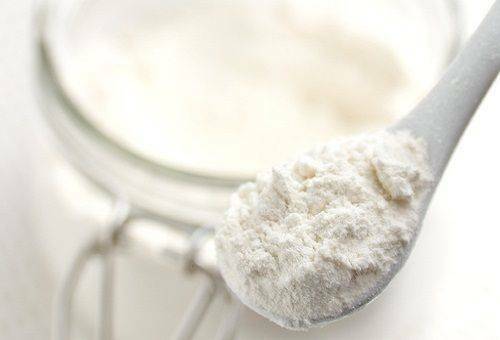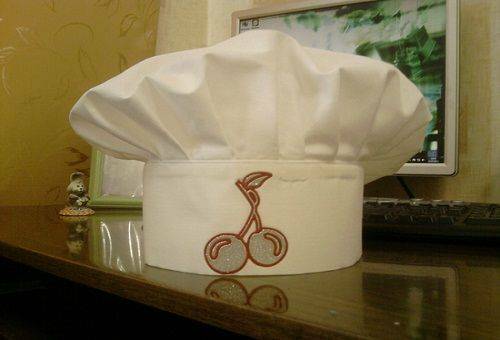A clean and dense headgear of a certain shape is not only a convenient device, but also an indicator of accuracy, and hence the professionalism of the cook or medical professional. To always maintain it in perfect condition, you need to know how to starch the hood, how to properly prepare it and conduct the final stage of treatment.

The procedure itself is quite simple, but there are several nuances, compliance with which will give an ideal result. To influence the tissue, you can use gelatinous solution or PVA glue, but it will not work better than using traditional starch.
Advice: It is strictly prohibited to starch medical and cooking caps with sugar. The headdress will attract the attention of insects, which is unacceptable in both cases.

Procedure for preparation and starching of fabric
First of all, the product needs to be washed and cleaned of all stains. With particularly persistent formations, hydrogen peroxide will help to cope. Just apply the composition to the dirt and leave the cap in the sun. After the disappearance of the stains, we erase the object and proceed to its starch:

- Take a liter of water with a tea, table or two tablespoons of potato starch. In the first case, fixation will be soft, but doctors and cooks use it very rarely. In the second case, it will be possible to achieve an average tissue density, in the third case, the maximum possible rigidity.
- In a glass or enameled container we lay out starch, gradually pour cold water into it, constantly stirring the composition. First you need to pour in so much liquid that the mass is like thick sour cream. The rest of the water is boiled and slowly poured into the resulting product, thoroughly stirring it. Some people prefer after that to boil the solution for three minutes, until it becomes transparent.
- In a slightly warm product we lower the cook or medical cap, we achieve its uniform impregnation, but do not soak for a long time. Then we take out the product and squeeze it lightly, holding hands from top to bottom. To twist the fabric is strictly forbidden, from such an aggressive impact on it will go creases, which will be difficult to straighten.
- The last step is drying the object, which implies a certain specificity.
The cook's hood is very tall, often complex in shape, it is recommended to prepare the drying form in advance. It can be made from cardboard, fastened with an adhesive tape. Headgear of the medical worker is enough to be planted on a glass jar of the appropriate size.

We wait until the product completely dries up and only then we remove it from the mold. The effect of artificial heat is allowed, it is best to use a hairdryer with warm air.
Features of work with headgear
In work with the hood of a cook or a paramedic you need to take into account the features of headdresses and professions, otherwise the end result will be far from ideal:

- Often chef's caps differ in height and elongated shape. To keep such quantity of a tissue in the necessary position it is possible only by means of the greatest possible fixing. Work on the matter must be done very carefully, if during the procedure even a small area remains unnoticed, the hood will go and manipulation will have to start again.
- If the maximum hardness has been used during the machining process, you do not need to iron the product. The average degree of processing from the subsequent ironing will only be strengthened and the thing will take a more accurate appearance.
- Chef hats of uneven shape( with waves in the upper part) require preparation of two types of composition, hard on a flat part and medium - on a figure. At first, the product is completely immersed in the middle solution and wrung out. Then part of the object is immersed in a strong solution and again squeezed out. After that, you can start to attach and fix the shape.
- For ironing headgear, you can only use powerful irons with a steaming function, this will avoid the formation of creases and creases on the fabric.
- Today, in addition to the traditional starch for processing headwear, you can use special detergent powders with a fixing effect, profile sprays, fixatives, liquid starch. The final result and the principle of working with them are about the same, but the time spent on manipulation is much less.
If the hood begins to lose its density and shape, do not just re-process it, especially partial. First, the product will have to be washed, otherwise it will not be possible to achieve an even distribution of the composition. Do not worry that the fabric will suffer from such a frequent effect of starch, no negative effect on the fiber natural product does not.



